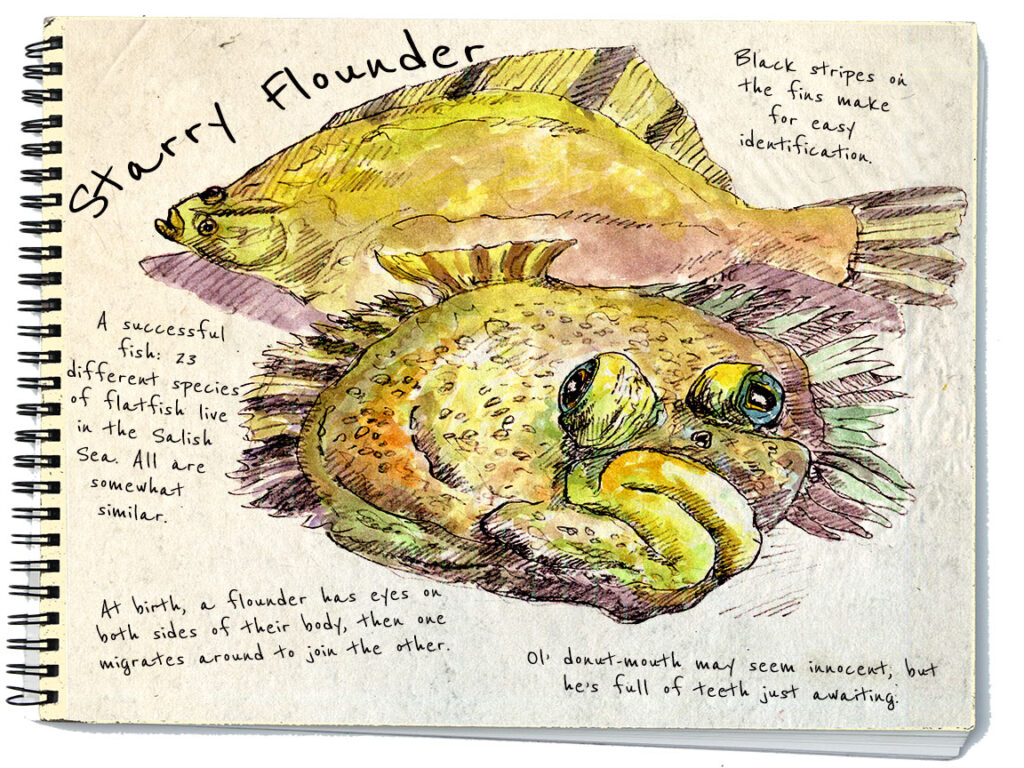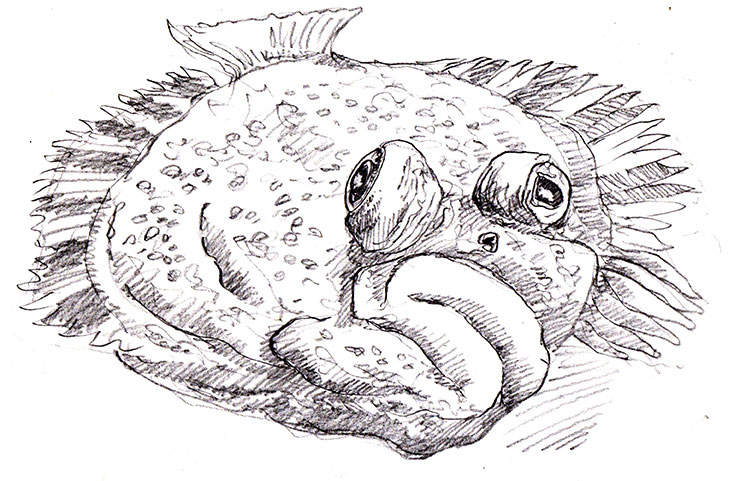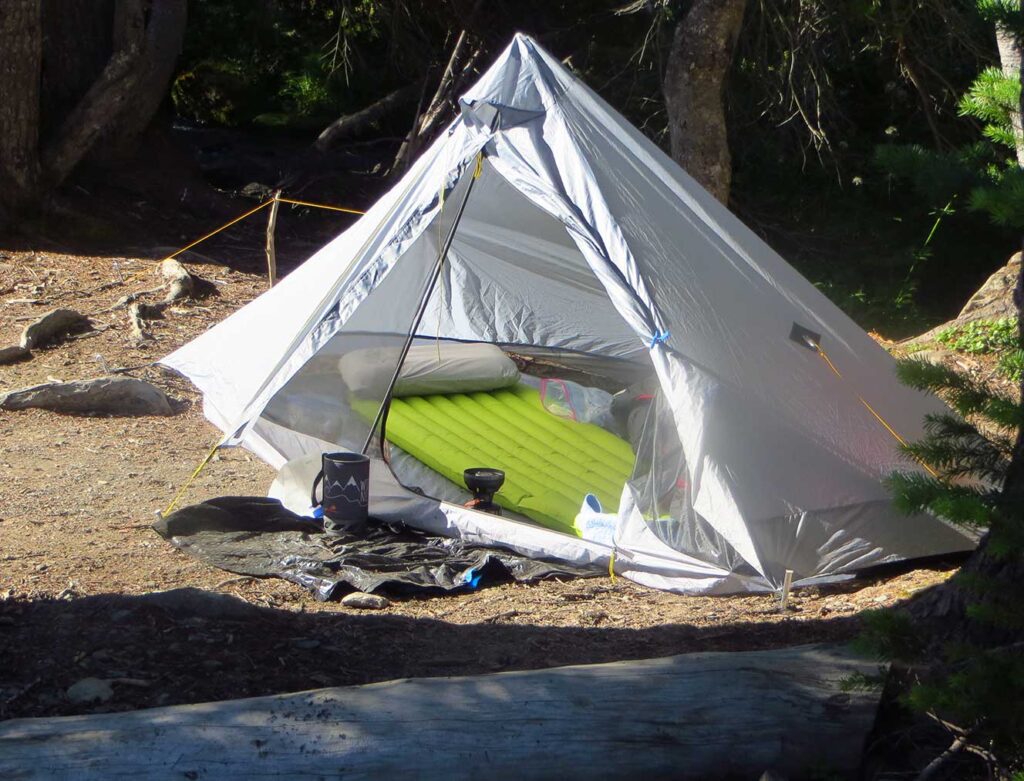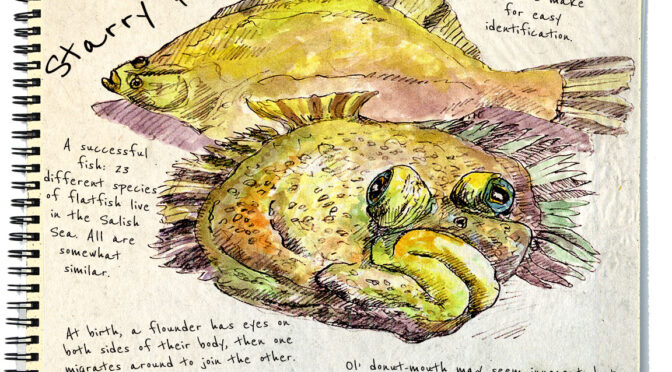
Yesterday I received my copy of 48 North magazine in the mail, and here is my page. Always amazed when the greens print nicely, and they did this time, subtle shades that aren’t easy to reproduce. For some reason, that color hates me in print. Flounders, flatfish, are always favorites of mine to paint. These fish begin life swimming upright like normal fish, eyes on both sides, then later they get lazy and settle onto the seafloor to await food that swims by. Since predators need good vision to catch prey, the eye that faces downward migrates around to the other side. I’m not kidding, but if you’re a flatfish fisherman, you will have seen this most every time you catch one. I find them fascinating.

So here’s my story that went with the art:
A face only a mother could love. Starry flounders are just one species of 23 local ‘flatfish’. Flat because they tend to spend their time lying flat on the bottom, on either their right or left sides. Beginning life, they’re just a ‘normal’ fish that swim upright, an eye on each side of a vertical body. As they age, they spend more time laying sideways on the bottom, lying prone and just waiting for pry to swim close enough to grab. Soon, strange things happen with the growing juveniles, and it’s not just hormones. It’s a major anatomical change. One of their eyes actually migrates around their head to the other side, stopping just short of the other one. Now, the upside view has a pair of eyes looking for the next meal. These are hunters, after all, and they need binocular vision to assess distance. So, the flounder then has its same two eyes, but now they’re on the upper side of the body, like two little periscopes.
Starry flounders can grow to 36” long, or bigger than the size of a garbage can lid. At this size, they’re approaching 20 lbs and they can live upwards of 20 years. They’re often found near shore in bays or even fresh water and throughout the coastal North Pacific. They sport namesake star-like scales on both the lighter downside and darker upper side. The distinctive black bands on outer fins make it an easy flatfish to identify, and they can alter their colors to match surroundings. As predators, they often settle on a sandy bottom and wiggle their fins to cover themselves with sand and debris to hide. With only eyes showing as they move independently gazing about, and a mouth just waiting to go to work, they wait for a hapless crab or small fish to wander by, and then ‘wham’. Look for these fish as you bring your skiff through shallow water towards the beach. The fish’s outline is usually obvious from above.
I’m going to be expanding this blog a bit, adding more art from my partner in crime, Nancy Cherry Eifert, and essays on hiking and seeking wildness. This blog seems to be growing into something bigger than just art and it’s evolving. So I should too.
This next hiking season, I’m being sponsored by Six Moon Designs, an ultra-light backpacking gear company from Oregon. After hiking for decades in heavy old gear, and trying desperately to lighten my load, here’s an example of what they’re letting me try out. My tent weight just went from 6 lbs to less then 2! This is the Six Moon Lunar Solo tent. Check it out here. Or, I’ll see you on the trail in a couple of months with a smile on my face.

If you want to sign up for my periodic blogs as emails, you can do it here.
Thanks for reading this week.
Larry Eifert
Here’s my Facebook fan page. I post lots of other stuff there.
Click here to go to our main website – with jigsaw puzzles, prints, interpretive portfolios and lots of other stuff.
Nancy’s web portfolio of stunning photography and paintings
And here to go to Virginia Eifert’s website.
